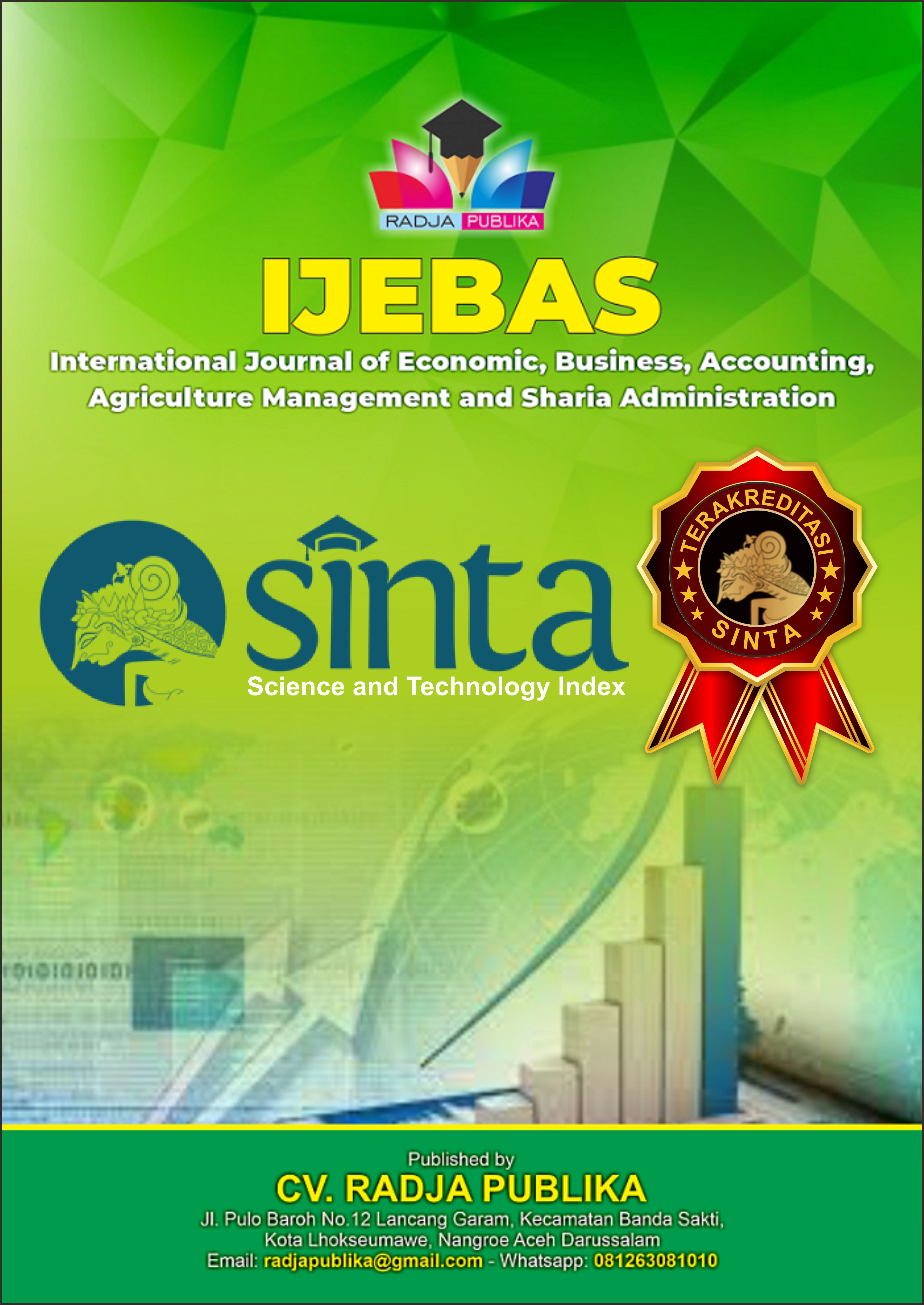ANALYSIS OF TURNOVER INTENTION THROUGH ORGANIZATIONAL COMMITMENT AT PT. BANK CIMB NIAGA
Main Article Content
Emi Wakhyuni
Husni Muharram Ritonga
Khairil Husnizar
In this study, structural equation modeling is used to analyze the relationship between organizational culture, leadership and job satisfaction on Turnover Intention through organizational commitment. The method used in collecting data is a quantitative method supported by SEM. Data were collected by distributing questionnaires to employees at CIMB Niaga by analyzing the data using the SEM method with the help of AMOS 22 software. SEM analysis has seven stages, namely, (1) development of theoretical models, (2) development of path diagrams, (3) conversion of path diagrams to structural equations, (4) selecting input matrices and types of estimation, (5) identifying models, (6) assessing goodness of fit criteria, (7) interpreting results. Based on the results of the study, it shows that organizational culture and leadership do not significantly affect Turnover Intention, satisfaction does not significantly affect Turnover Intention, organizational culture and leadership have a significant effect on commitment, job satisfaction has a significant effect on commitment, commitment has a significant effect on Turnover Intention and organizational culture, leadership and satisfaction have a significant effect on Turnover Intention through commitment as a mediating variable.
Badriah, Mila .Manajemen Sumber Daya Manusia. Bandung: Pustaka Setia.2015.
Hamid, S., & Fauzan, R. (2023). Pengaruh Stres Kerja, Komitmen Organisasi, dan Kepuasan Kerja Terhadap Turnover Intention (Studi Penelitian Hotel Gajahmada Pontianak). Prosiding Management Business Innovation Conference (MBIC), Jurnal Untan, 01, 1– 23.
Lestari, Ni N. Y. S., and Ni W. Mujiati. "Pengaruh Stres Kerja, Komitmen Organisasi, dan Kepuasan Kerja Karyawan terhadap Turnover Intention." E-Jurnal Manajemen Universitas Udayana, vol. 7, no. 6, 2018, doi:10.24843/EJMUNUD.2018.v07.i06.p20.
Rizky, W. M., & Prastyani, D. (2023). Pengaruh Kompensasi, Job Crafting Dan Job Embeddedness Terhadap Turnover Intention. SIBATIK JOURNAL: Jurnal Ilmiah Bidang Sosial, Ekonomi, Budaya, Teknologi, Dan Pendidikan, 2(9), 2867–2882. https://publish.ojs-indonesia.com/index.php/SIBATIK
Rindi, A., Rizky, M. C., Ritonga, H. M., & Nurhaliza, I. (2024, August). Human Resources Empowerment Program on Village Development Performance (Case Study of Pematang Serai Village). In 1St International Conference Epicentrum of Economic Global Framework (Vol. 1, No. 1, pp. 976-990).
Sugiono. 2012. Metode Penelitian Kuantitatif Kualitatif dan R&D". Penerbit Alfabeta, Bandung.
Suparmi, Siswanto, A., Siswadhi, F., Utami, S. S., Wahyudi, I., Hidayati, L., Supartini, E., Ahmad, M., Chaerudin, A., Kusumawati, B., & Junitasari. (2023). Manajemen Sumber Daya Manusia (Prinsip - Prinsip dan Praktik dalam Mengelola Organisasi) (Efitra & Sepriano (eds.); 1st ed.). PT Sonpedia Publishing Indonesia
Wahyudi, I et al (2024). Kajian Literatur : Faktor Yang Mempengaruhi Turnover Intention Karyawan Dalam Manajemen Sumber Daya Manusia. Jurnal Manuhara. Vol.2 April 2024
Wakhyuni, E., & Dalimunthe, A. A. (2020). Pengaruh Etika Kerja, Pengalaman Kerja, Dan Budaya Kerja Terhadap Prestasi Kerja Pegawai Badan Kesatuan Bangsa, Politik Dan Perlindungan Masyarakat Kabupaten Karo. Jurnal Manajemen Tools, 12(2), 14-29.
Youcef, S., S. S. Ahmed, B. Ahmed. 2016. The Impact of Job Satisfaction by the Existence of Organizational Commitment, and of Organizational Commitment, and Inten to Stay as Intermediates Variables Using approach PLS In Sample Worker Department of Transport Saida, 6(6), 198-202.



























